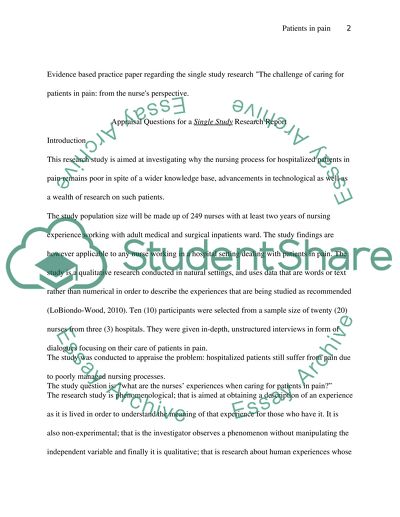Cite this document
(“Patients in Pain Research Paper Example | Topics and Well Written Essays - 2000 words”, n.d.)
Patients in Pain Research Paper Example | Topics and Well Written Essays - 2000 words. Retrieved from https://studentshare.org/nursing/1433447-evidence-based-practice-paper-regarding-the-single
Patients in Pain Research Paper Example | Topics and Well Written Essays - 2000 words. Retrieved from https://studentshare.org/nursing/1433447-evidence-based-practice-paper-regarding-the-single
(Patients in Pain Research Paper Example | Topics and Well Written Essays - 2000 Words)
Patients in Pain Research Paper Example | Topics and Well Written Essays - 2000 Words. https://studentshare.org/nursing/1433447-evidence-based-practice-paper-regarding-the-single.
Patients in Pain Research Paper Example | Topics and Well Written Essays - 2000 Words. https://studentshare.org/nursing/1433447-evidence-based-practice-paper-regarding-the-single.
“Patients in Pain Research Paper Example | Topics and Well Written Essays - 2000 Words”, n.d. https://studentshare.org/nursing/1433447-evidence-based-practice-paper-regarding-the-single.


